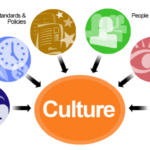
NOKIA the once powerful telecoms company had been acquired by Microsoft, but it was the last speech of the Nokia CEO that made me wonder. Tearfully he ended his speech by saying “we didn’t do anything wrong, but somehow, we lost”. Upon saying that, all his management team, himself included, teared sadly ‘.

Davila, Epstein, and Shelton in their book ‘Making innovation work’, observe that leaders need to guard against the negative effects of success. They argue that success is one of the most dangerous threats to innovation because it can easily breed organizational complacency.
Leaders have to, they need to, fight complacency and keep alive the drive for valuable change. Complacency at the top will always lead to complacency within.
Sometimes leaders dodge innovation efforts from the organization in a bid to avoid people at work who always resist change or innovation. They may create stand-alone departments to focus on innovation but these approaches rarely work because to be successful an organization needs not just a department but a rich network of innovation culture with the critical resources in the organization and with outside partners.

Strategy always comes before structure, and therefore, for innovation to succeed, it is important to build the right team (from the beginning) as well as determining those who will be on the team.
Other crucial decisions include, ‘where they will come from’, ‘how they will be organized’, ‘how much time they will devote to the project’, and finally ‘how they will navigate the delicate and conflict-rich partnership between innovation and ongoing operations’.

It isn’t enough for leaders to just dedicate themselves to learning how to build a successful company. They must be able to build and sustain a creative culture.
There will always be people within the organization that will challenge change and innovation and it is the responsibility of the leaders to craft a strategy that seeks to balance change and continuity. Organizations need to adapt to the changes generated by innovation while maintaining stability.

Finally, the art of innovation relies heavily on teamwork hence it is critical for leaders to be able to strategically collaborate and master the art of teamwork. They must be able to create a workplace where there is freedom to inspire and be inspired, to try and fail in the pursuit of breaking new territory.
To have done ‘nothing wrong’ is in itself a signal that something is wrong and perhaps this is a lesson that the CEO of Nokia has learned but sadly it was too late!